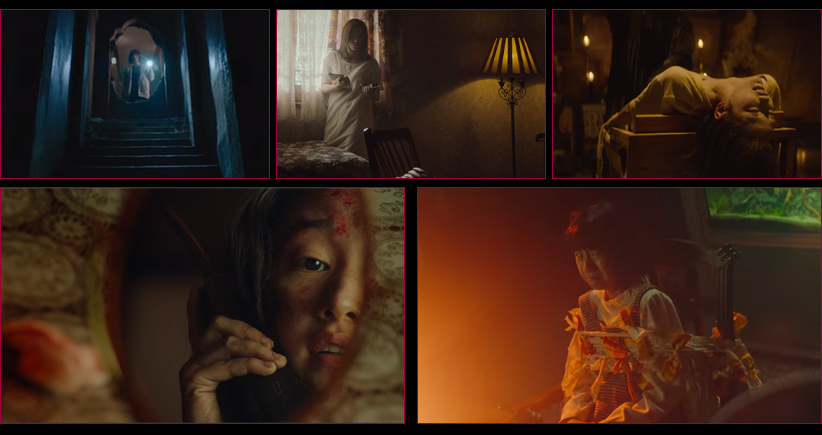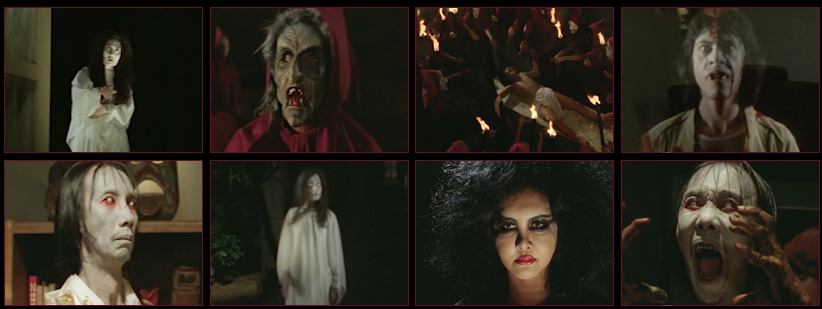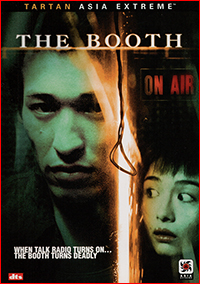 Shogo is the star of a popular call-in radio show, who is forced to broadcast from the infamous “Studio 6“ which is a creepy and abandoned booth. The last time someone used it was several years ago, when the DJ there committed suicide. Yay. Shogo is also a prime example of the douchebag breed, and of course he’s got some skeletons in the closet. His crew isn’t exactly treated fairly by him, either. When someone on the line starts whispering “liar“ to him, he starts fearing that someone knows about his troubled past. Or maybe…the studio is cursed and the same fate that fell on the previous DJ will also fall upon him? Shogo keeps getting more and paranoid.
Shogo is the star of a popular call-in radio show, who is forced to broadcast from the infamous “Studio 6“ which is a creepy and abandoned booth. The last time someone used it was several years ago, when the DJ there committed suicide. Yay. Shogo is also a prime example of the douchebag breed, and of course he’s got some skeletons in the closet. His crew isn’t exactly treated fairly by him, either. When someone on the line starts whispering “liar“ to him, he starts fearing that someone knows about his troubled past. Or maybe…the studio is cursed and the same fate that fell on the previous DJ will also fall upon him? Shogo keeps getting more and paranoid.
The Booth is a J-Horror movie from 2005, written and directed by Yoshihiro Nakamura. The leading role in the movie is played by Ryûta Satô, and this was actually his first leading role. He’s most known for his role in the Netflix movie Fullmetal Alchemist from 2017.
There are many early 2000’s J-Horror films that are little known. Some for obvious reasons, while others never got the attention they deserved. The Booth falls a bit into the latter category, as it’s a very decent mystery horror film. It’s mostly a one-location movie, which focuses on the tension built from Shogo’s asshole-behaviour and creeping sense of unease as he fears that his bad attitude has started catching up on him. As the film opens with the reveal of the DJ having committed suicide in the notorious Studio 6, we already know that there might be some supernatural influences here. Or is there, really? The movie offers so many twists and turns underway, some which you’re very unlikely to see coming.
Limited location movies often depend a lot on the leading role character, and Ryûta Satô does a great job performing as the arrogant and despicable DJ Shogo. All throughout the movie, you get snippets from his past and several misdeeds, and there’s especially one that ends up revealing quite the unexpected turn of events. You don’t root for this guy at all, so you end up looking forward to see him get a bit of karma teeth on his ass. Whether or not it’s a curse, supernatural forces of some kind, or simply his barebones bad conscience that catches up with him…well, that’s something the movie keeps as a mystery until the very end.
The Booth is an obscure, creepy little J-Horror film, definitely worth a watch if you’re looking for a claustrophobic horror chamber film that will keep you guessing.
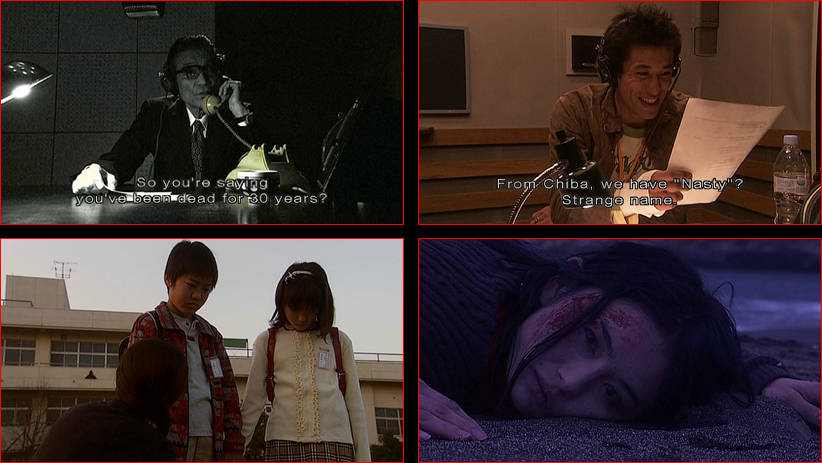
Writer and director: Yoshihiro Nakamura
Original title: Bûsu
Country & year: Japan, 2005
Actors: Maiko Asano, Makoto Ashikawa, Mansaku Ikeuchi, Seiko Iwaidô, Hijiri Kojima, Masaki Miura
IMDb: https://www.imdb.com/title/tt0760506/
![]()











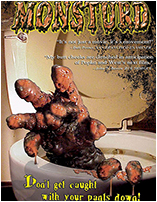
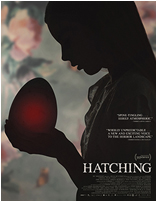


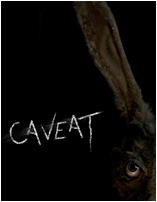








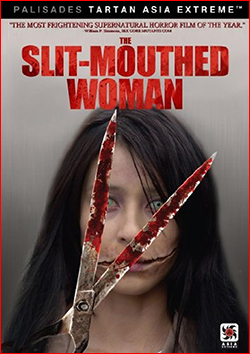






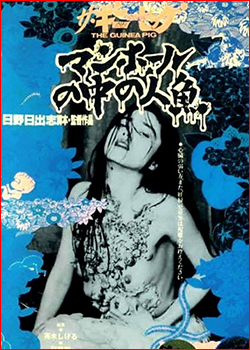
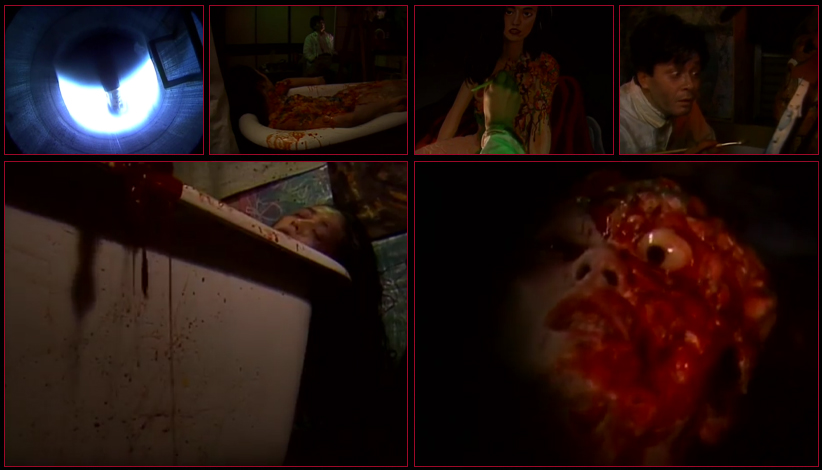

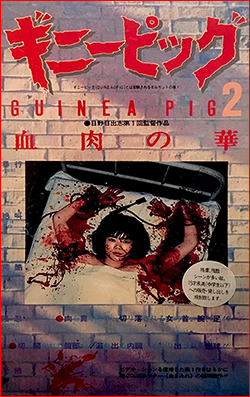
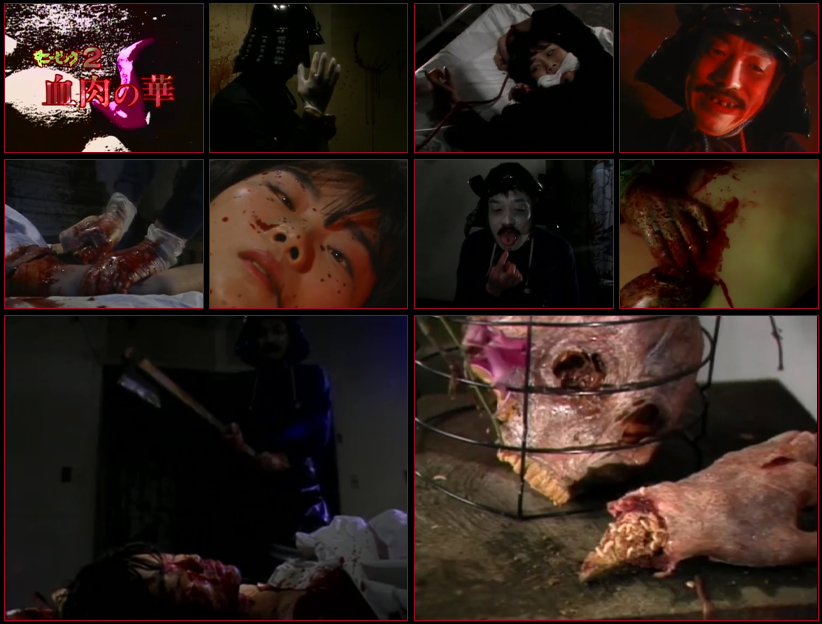

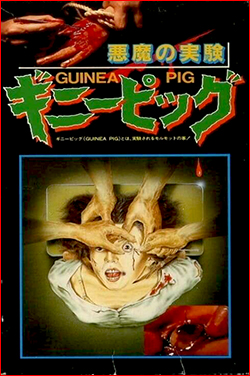
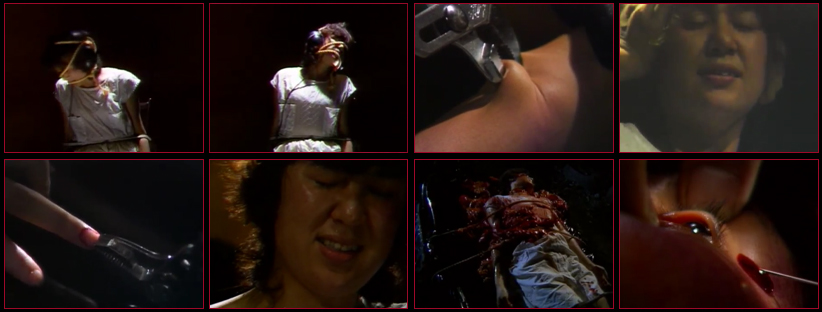





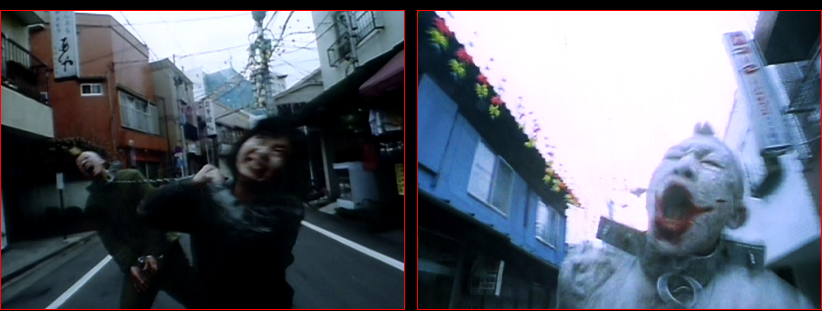
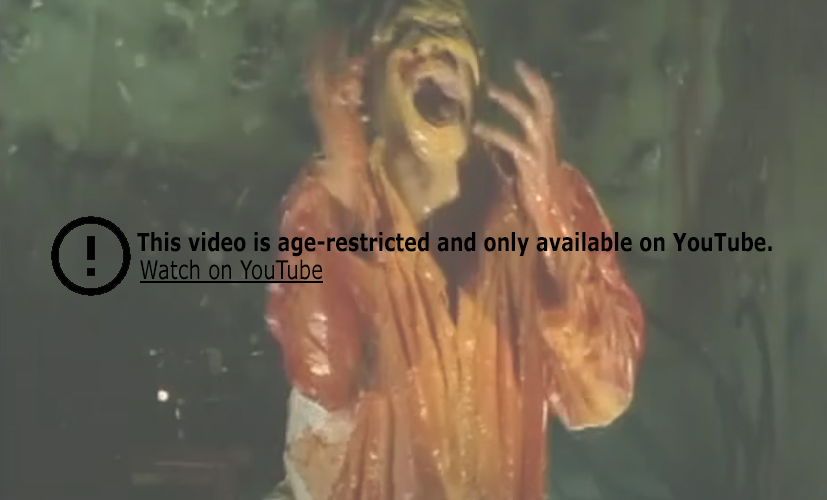
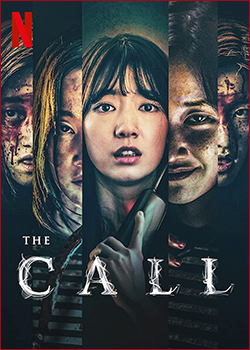 Seo-yeon is a 28 year old woman who has traveled to visit her sick mother in the rural area where she grew up. Finding that she has lost her cellphone, she goes to her rundown childhood home where she finds an old cordless phone. Soon, she starts receiving calls from this phone, where a woman claims she is being tortured by her own mother. Thinking of it as someone who have just dialed the wrong number, Seo-yeon decides to investigate the matter when more calls from this mysterious woman comes through the old phone. She finds out that the woman making the calls, Young-sook, lived in the same house in 1999…which is also the year Young-sook claims to live in when making the calls. Seo-yeon lives in 2019, which means there’s a 20 year timegap between her and the caller. The two women make contact through the phone calls, and starts exchanging information about the time they live in and their own lives. Seo-yeon explains that when she was a child, her father died in a fire. Young-sook is then able to prevent Seo-yeon’s father from dying in that accident, and Seo-yeon’s life immediately changes: both of her parents are now suddenly there and healthy, and their house is no longer in the rundown state it used to be in. Happy about the turn of events, Seo-yeon starts searching for Young-sook in order to find out what kind of life she is living these days, in the present…only to find an old newspaper article about how Young-sook was killed by her mother during an exorcism. Seo-yeon tries to warn Young-sook about what is going to happen, and by doing so, unleashes an unexpected chain of events.
Seo-yeon is a 28 year old woman who has traveled to visit her sick mother in the rural area where she grew up. Finding that she has lost her cellphone, she goes to her rundown childhood home where she finds an old cordless phone. Soon, she starts receiving calls from this phone, where a woman claims she is being tortured by her own mother. Thinking of it as someone who have just dialed the wrong number, Seo-yeon decides to investigate the matter when more calls from this mysterious woman comes through the old phone. She finds out that the woman making the calls, Young-sook, lived in the same house in 1999…which is also the year Young-sook claims to live in when making the calls. Seo-yeon lives in 2019, which means there’s a 20 year timegap between her and the caller. The two women make contact through the phone calls, and starts exchanging information about the time they live in and their own lives. Seo-yeon explains that when she was a child, her father died in a fire. Young-sook is then able to prevent Seo-yeon’s father from dying in that accident, and Seo-yeon’s life immediately changes: both of her parents are now suddenly there and healthy, and their house is no longer in the rundown state it used to be in. Happy about the turn of events, Seo-yeon starts searching for Young-sook in order to find out what kind of life she is living these days, in the present…only to find an old newspaper article about how Young-sook was killed by her mother during an exorcism. Seo-yeon tries to warn Young-sook about what is going to happen, and by doing so, unleashes an unexpected chain of events.